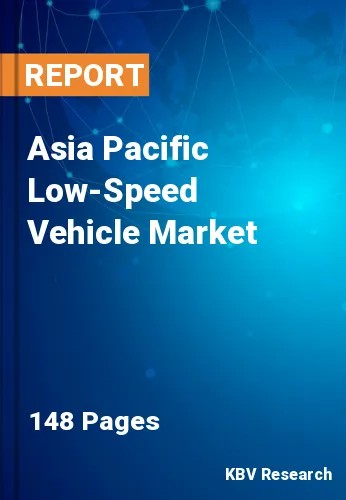The Asia Pacific Low-Speed Vehicle Market would witness market growth of 8.0% CAGR during the forecast period (2023-2030).
The main causes of the rise of the market are rapid urbanization and rising public safety concerns. The variables that will speed up market expansion include expanding government measures for reducing carbon emissions and rising worldwide traffic congestion. Growing public-private interactions and increasing megacities will create favorable conditions for expanding the market.
Three-point seat belts, running lights, headlights, brake lights, reflectors, rearview mirrors, backup cameras, and turn signals are typically included in LSVs. Modern LSVs have full doors, Bluetooth stereo, USB charging, climate control, zero emissions, defrost windshield with washer, and adjustable power steering. For warehouses or factories, some LSVs are used to move cargo on a flatbed behind the cab.
India is the world's fourth-largest sector for vehicles. The Indian government has set ambitious goals and implemented supportive policies to ensure that electric vehicles replace fossil fuel-based vehicles as the main means of transportation, even though these vehicles dominate the current automotive sector. The ambitious goal is to sell 6-7 million hybrid and electric vehicles annually in 2020 under the National Electric Mobility Plan (NEMMP). The Indian government hopes to fulfill the electrified dream of 400 million customers by 2030. It is expected that the market will expand as a result of the rising popularity of electric vehicles and the focus on environmentally friendly practices supported by governments of regional nations.
The China market dominated the Asia Pacific Low-Speed Vehicle Market by Country in 2022 and would continue to be a dominant market till 2030; thereby, achieving a market value of $1,537.7 million by 2030. The Japan market is anticipated to grow at a CAGR of 7.3% during (2023 - 2030). Additionally, The India market would witness a CAGR of 8.6% during (2023 - 2030).
Based on Category Type, the market is segmented into L7, and L6. Based on Vehicle Type, the market is segmented into Commercial Turf Utility Vehicle, Golf Cart, Industrial Utility Vehicle, and Personal Mobility Vehicle. Based on Power Output, the market is segmented into <8KW, 8-15KW, and >15KW. Based on Propulsion, the market is segmented into Electric, Diesel, and Gasoline. Based on Battery Type, the market is segmented into Li-Ion, and Lead Acid. Based on Voltage Type, the market is segmented into <60 V, and >60 V. Based on Application, the market is segmented into Golf Courses, Hotels & Resorts, Airports, Industrial Facilities, and Others. Based on countries, the market is segmented into China, Japan, India, South Korea, Singapore, Malaysia, and Rest of Asia Pacific.
Free Valuable Insights: The Worldwide Low-Speed Vehicle Market is Projected to reach USD 16.3 Billion by 2030, at a CAGR of 7.2%
The market research report covers the analysis of key stake holders of the market. Key companies profiled in the report include Textron, Inc., Deere & Company, Yamaha Motor Co., Ltd., The Toro Company, KUBOTA Corporation, Columbia Vehicle Group Inc. (Nordic Group of Companies, Ltd.), Waev, Inc., Club Car, LLC, American LandMaster, and Suzhou Eagle Electric Vehicle Manufacturing Co., Ltd.
By Category Type
By Vehicle Type
By Power Output
By Propulsion
By Battery Type
By Voltage Type
By Application
By Country
Our team of dedicated experts can provide you with attractive expansion opportunities for your business.

